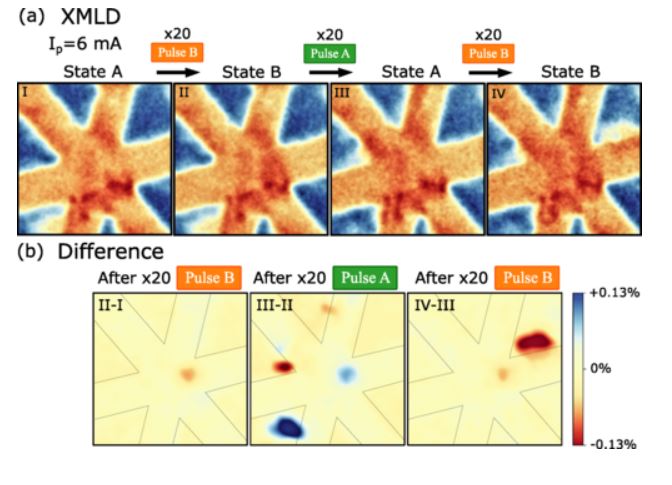
X rays have been used to image the spin directions in an antiferromagnetic thin film of hematite (α-Fe2O3) and show how they reorient in response to electrical pulses. Spin switching is shown to depend on the current direction and occurs even outside the current path. The results here show that, in addition to any direct interaction between the electrical current and the spins, thermal effects lead to spin reorientation, highlighting the delicate balance of interactions important to understanding the physics of current-induced switching in antiferromagnets.
Specifically, we reported the direct observation of switching of the Néel vector of antiferromagnetic (AFM) domains in response to electrical pulses in micron-scale Pt/α−Fe2O3 Hall bars using photoemission electron microscopy. Current pulses lead to reversible and repeatable switching with the current direction determining the final state, consistent with Hall effect experiments that probe only the spatially averaged response. Current pulses also produce irreversible changes in domain structure, in and even outside the current path. In both cases only a fraction of the domains switch in response to pulses. Furthermore, the analysis of images taken with different x-ray polarizations shows that the AFM Néel order has an out-of-plane component in equilibrium that is important to consider in analyzing the switching data. These results show that—in addition to effects associated with spin-orbit torques from the Pt layer, which can produce reversible switching—changes in AFM order can be induced by purely thermal effects.
This work has been published in PRB and can be accessed here.
